Guardians of the Rainforest | COFAN
A’i Kofán | The “Real people”
The Indigenous peoples of the Ecuadorian Amazon stand at a crossroads, their way of life and ancestral lands threatened on all sides. This project explores the story of the Cofán (A’i Kofán), who are fiercely committed to safeguarding their heritage and the rainforest that is their home. Numbering only about 1,200, the Cofán are one of the region’s smallest Indigenous groups, living between the winding Aguarico and Napo Rivers. Their culture is woven from the lush fabric of the rainforest, their myths echoing through the trees, shaped by encounters with outsiders and a vibrant spiritual tradition. The Cofán hold fast to their ancient language, shamanic wisdom, and the protection of their land. Their spirituality pulses through the forest, guided by a deep harmony with nature, where stories of spirits and Ayahuasca ceremonies are filled with profound meaning.
Yet in recent years, oil companies, illegal settlers, and gold miners have scarred Cofán territory, poisoning rivers and forests, and bringing illness to their people. In the face of these threats, the Cofán have turned to the power of their stories, wielding them as shields to defend their land from logging, oil extraction, and other dangers.
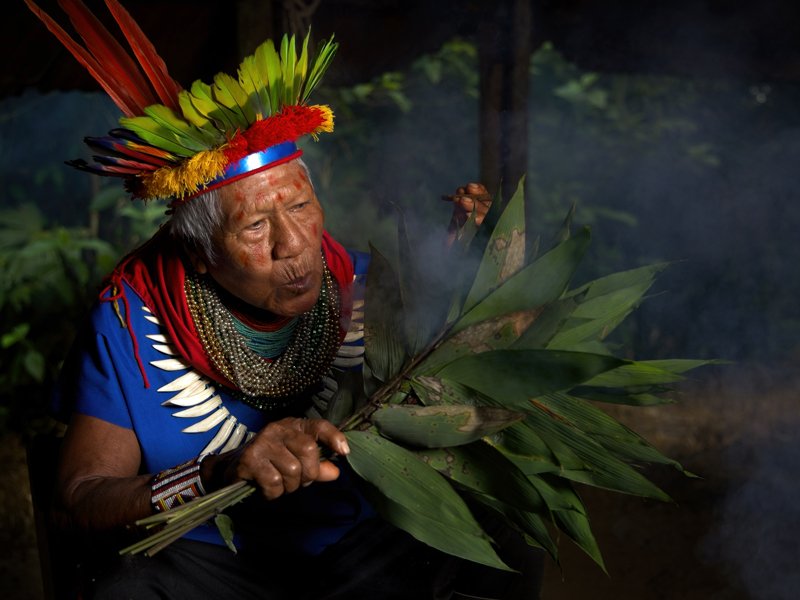
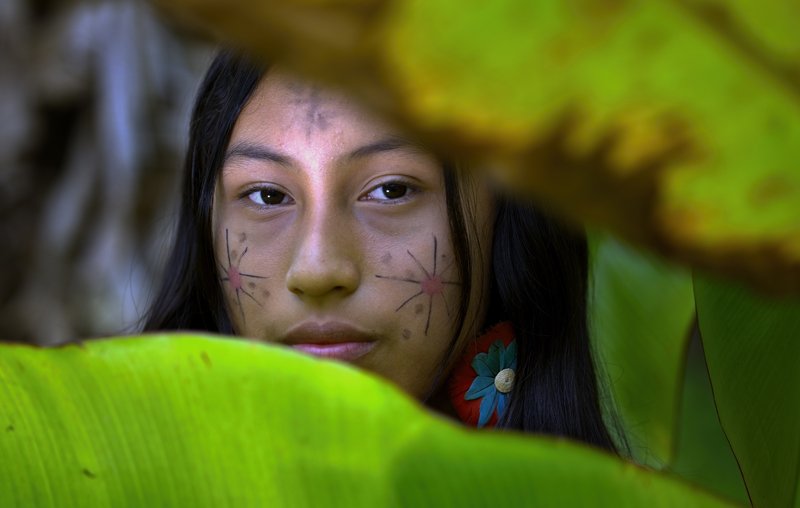
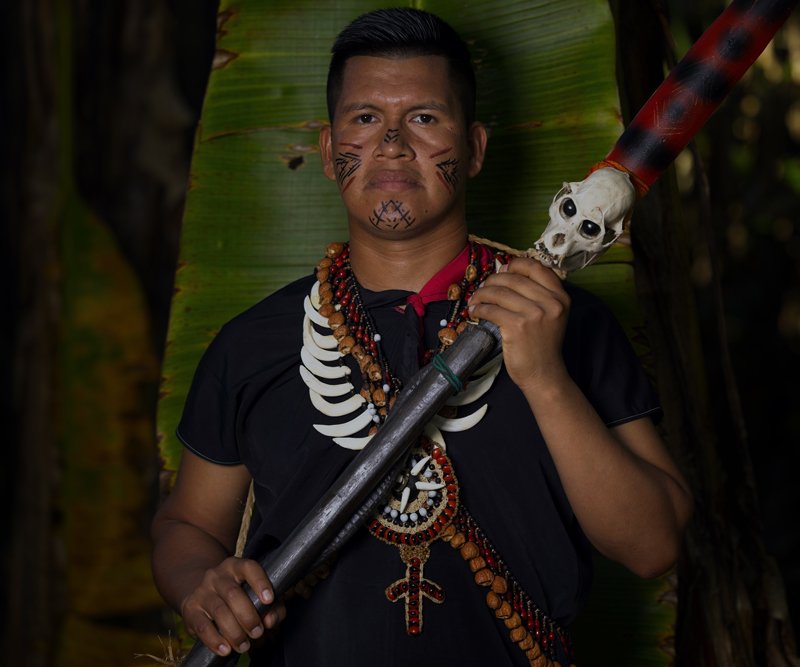
Silent Guardians | Errission
This unwavering commitment to defense comes to life in the Indigenous Guardia, named for the legendary hero Erisiun—a group of courageous and dedicated men and women devoted to protecting their ancestral home. Dressed in black and green, the A’i Cofán guards carry short chonta palm spears decorated with amulets, moving like shadows through the jungle’s secret paths. These guardians patrol a vast territory stretching from the Andean foothills to the heart of the Amazon, their watchful eyes ever alert for illegal gold mining and the smuggling of illicit gold.
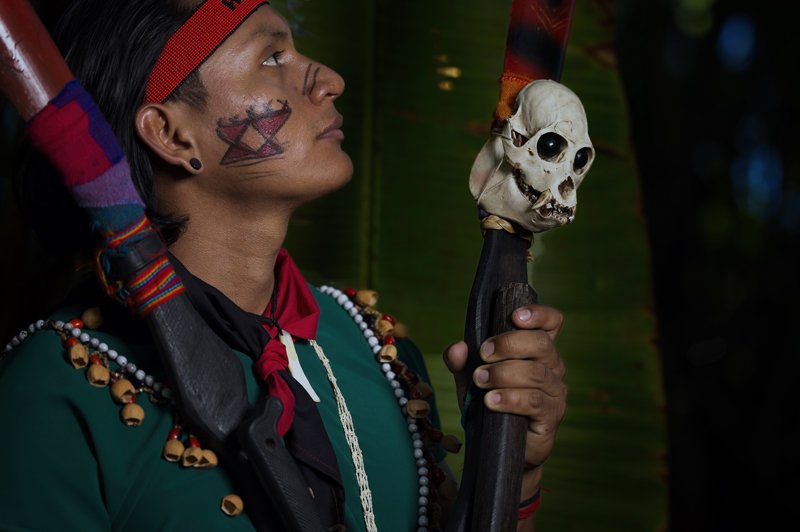
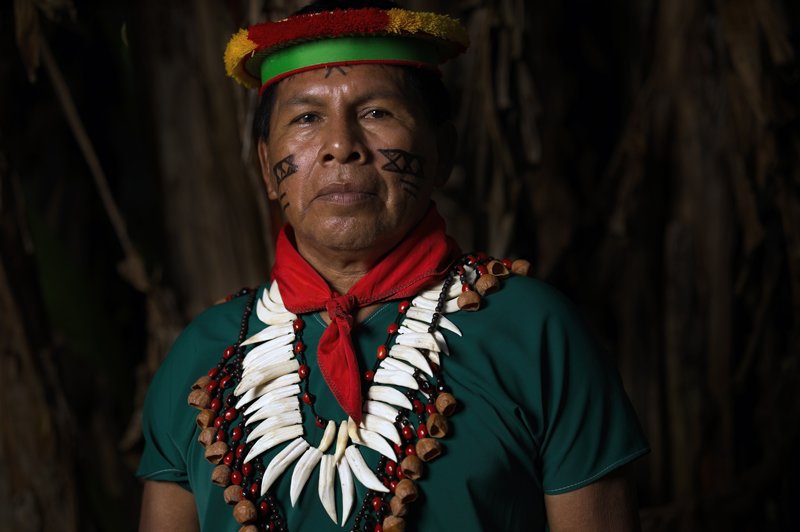

Huaorani | The “People”
Journeying deeper into Yasuní, we meet the Huaorani, Ecuador’s most recently contacted Indigenous people. First encountered by US missionaries and oil workers in the late 1950s, the Huaorani have since weathered the impacts of oil exploitation, displacement, and profound cultural shifts. Today, around 2,000 Huaorani remain in the rainforest, including three groups who still live beyond the reach of outsiders. Once nomadic hunter-gatherers moving in small clans, the Huaorani have become more settled, yet they still hunt monkeys and peccaries with long blowguns and curare-tipped arrows, fish the rivers, and tend crops as their ancestors have for generations.
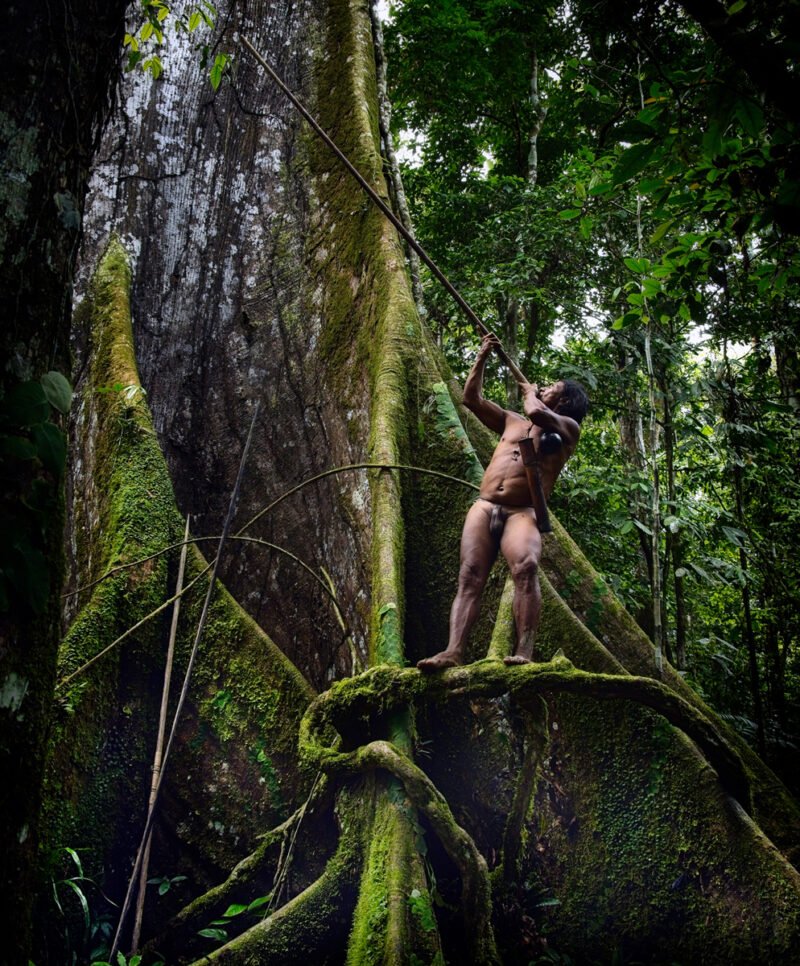
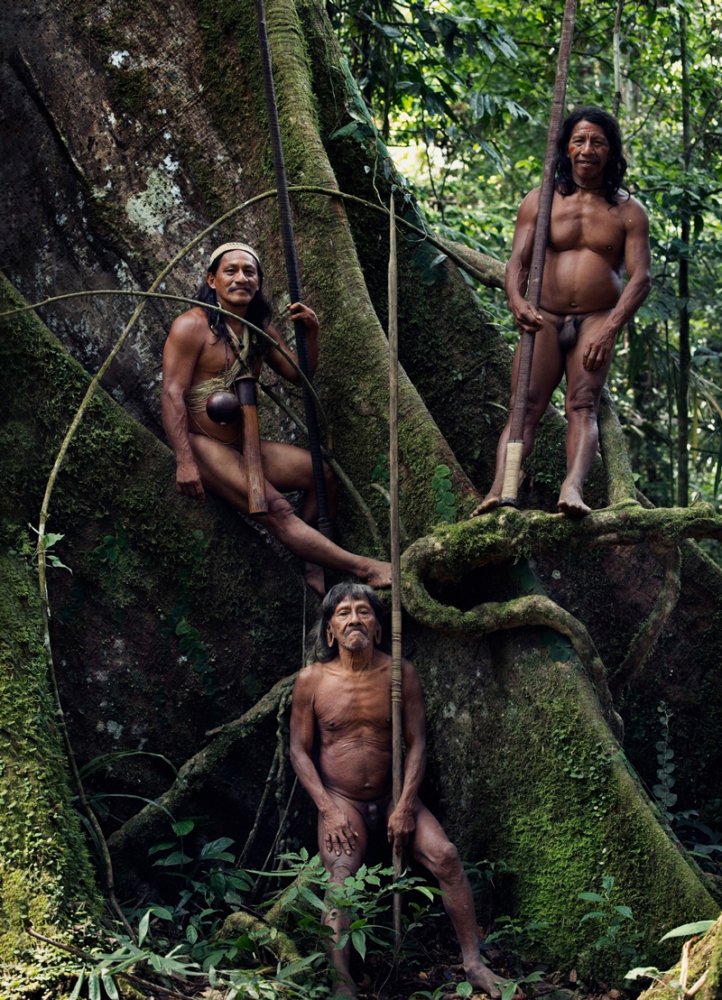
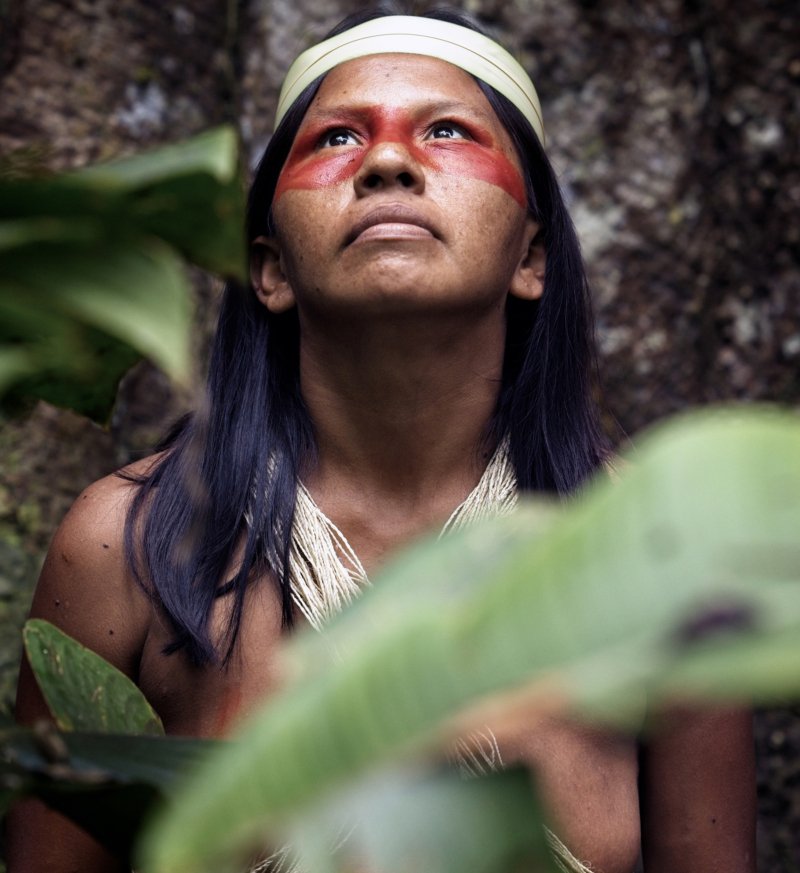
¡Sí a la Vida! | Yes to Yasuní!
The Huaorani and the A’i Cofán, though distinct, are united in their mission to defend the Amazon’s natural riches and their ancestral homelands. Cofán legends speak of the Huaorani as ancient kin who ventured deeper into the jungle. Both people have become renowned for their legal triumphs against government and oil interests, standing firm against the tide of oil extraction, logging, and deforestation that threatens their traditions. These victories have forged alliances, such as their joint 2022 petition for ancestral rights. Yet, the path is fraught with obstacles. Legal rulings are often undermined by powerful interests, and both groups struggle with limited resources and international support, making sustained resistance a challenge. Still, the Cofán persist in their opposition to state oil expansion, showing remarkable resilience and, at times, confronting authorities head-on.
The tireless efforts of both groups are vital to the rainforest’s future. The Huaorani homeland includes stretches of Yasuní National Park, a living treasure trove of biodiversity. By protecting this land, they safeguard not only their own cultures but also the delicate balance of the natural world. Their steadfast resistance has drawn the world’s gaze to the cause of Indigenous rights and the preservation of biodiversity. In recognition of their courage, Cofán leaders Alexandra Narváez and Alex Lucitante were awarded the 2022 Goldman Environmental Prize for their unwavering advocacy.
The significance of this region is underscored by the Yasuni Biosphere Reserve, which covers 982,000 hectares in the upper Amazon and boasts remarkable biodiversity and largely pristine vegetation. Declared a National Park in 1979, it was designated a Biosphere Reserve by UNESCO in 1989 to recognize its exceptional natural and cultural significance. Yasuní served as a refuge for life during the final glacial period. Over time, oil exploration has posed persistent threats to wildlife and traditional ways of life. In August 2022, Ecuadorians voted to halt all new oil drilling in Yasuní National Park, offering hope for the Huaorani and their ancestral land. As countries worldwide grapple with the balance between development and environmental preservation, Yasuní serves as an emblem of successful advocacy and protection of Indigenous rights, setting a precedent that aligns with international efforts to combat climate change and uphold the rights of Indigenous peoples.
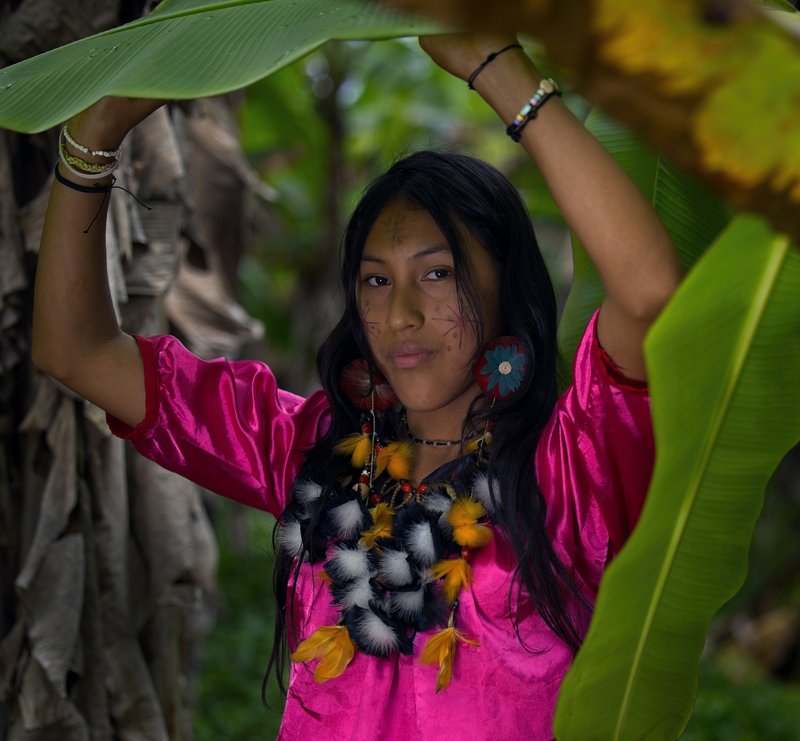
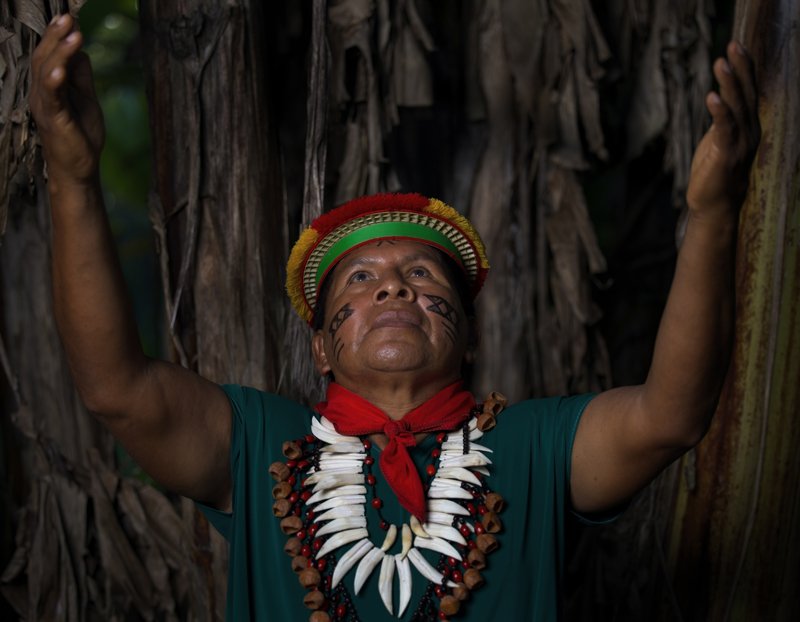
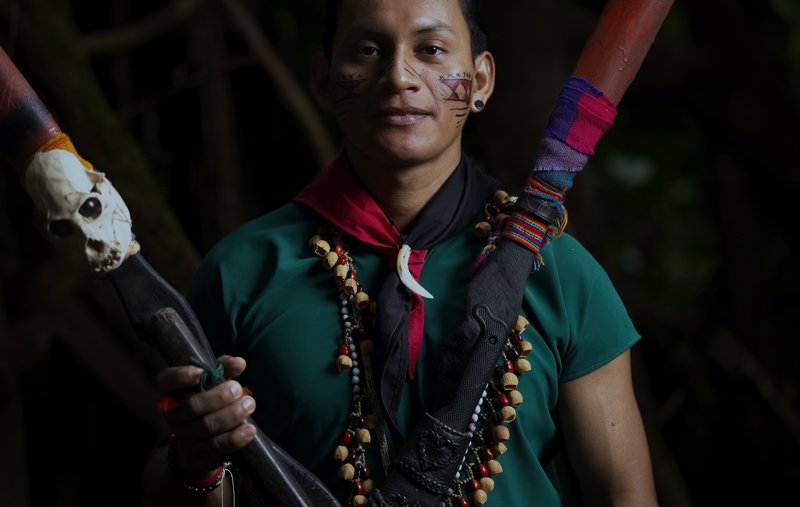
Yasuní | The Spirits are there ….
• Huaorani/Waorani (plus uncontacted groups), Kichwa/Quichua, and Zápara, Cófan, Shuar/Achuar, and Secoya people, among other residents
• Over 100,000 species of insects per hectare.
• 94 species of ants on a single tree and 1,130 species of trees, more than in Canada and the United States combined.
•• 10 species of monkeys, 81 species of bats and 630 species of birds.
• 540 species of fish in a 5-kilometer segment of any river.
• 165 species of mammals.
• 130 species of amphibians and 72 species of reptiles.
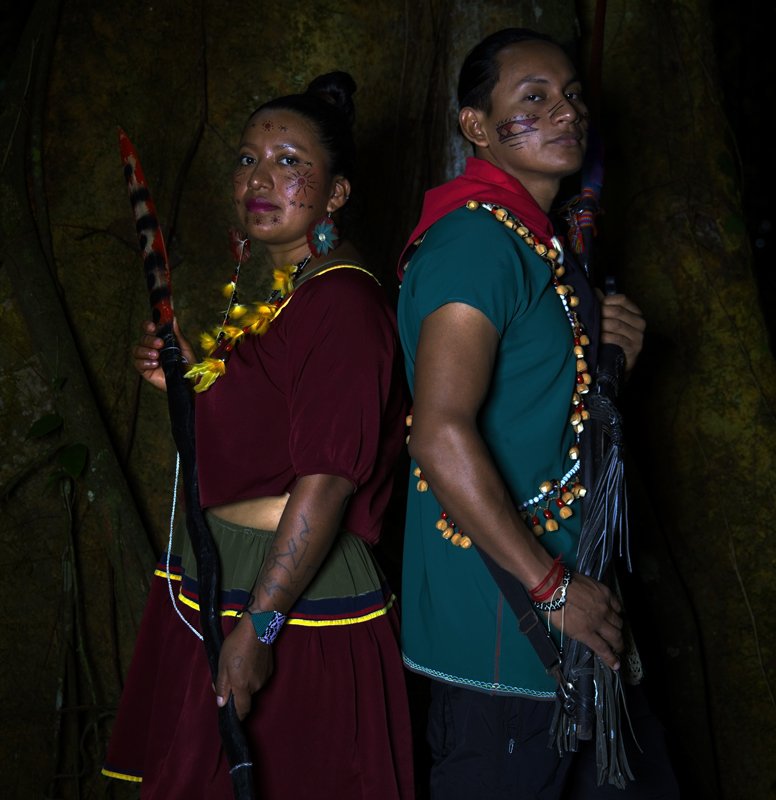
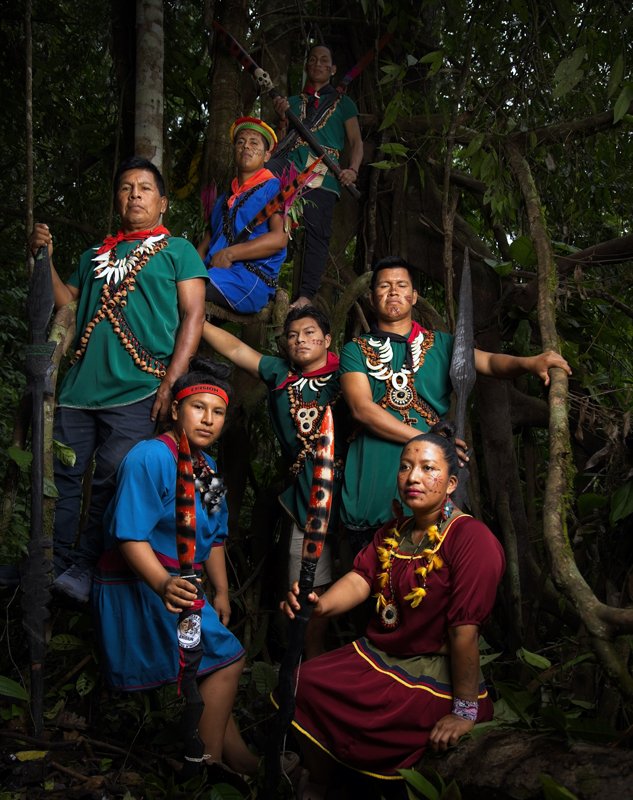
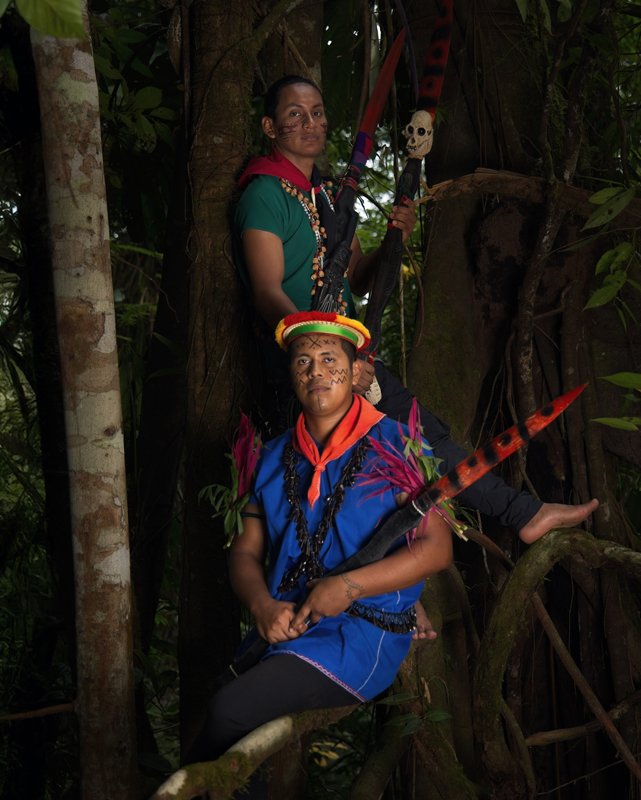
Distinguished portraits
Don Hector, a Cofán shaman, embodies living tradition. He wears a blue tunic, a crown of vivid parrot feathers, a necklace strung with jaguar teeth, and beads draped around his neck. Red markings, reminiscent of a jaguar’s spirit, are painted across his face, echoing the wild heart of the rainforest.
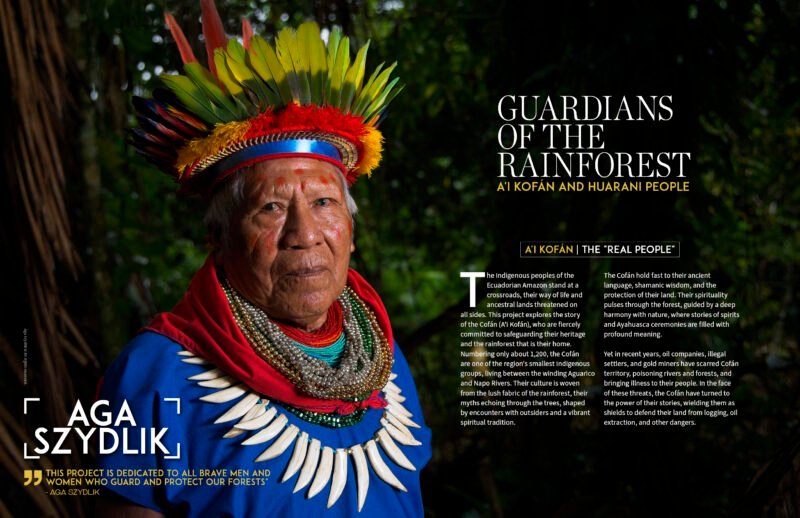
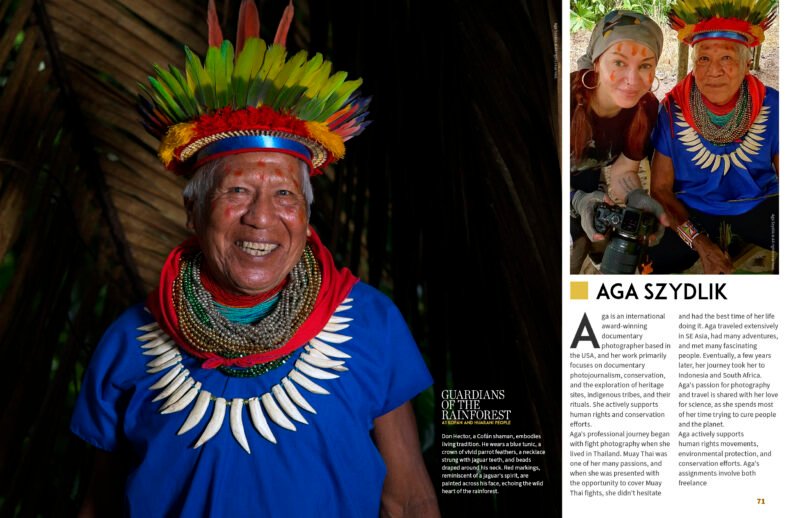
Words of Gratitude
Livio, our friend and trusted guide, who leads us through the Amazon jungle while flinging giant banana spiders our way – we love you, Livio. Shane, for always being on point, your smile brightens this universe. The BTS crew – Rachel and Marielle (your western names) – you were absolute troopers- thank you for being who you are. Billy, as always, you rock my world! The trip wouldn’t be the same without you !
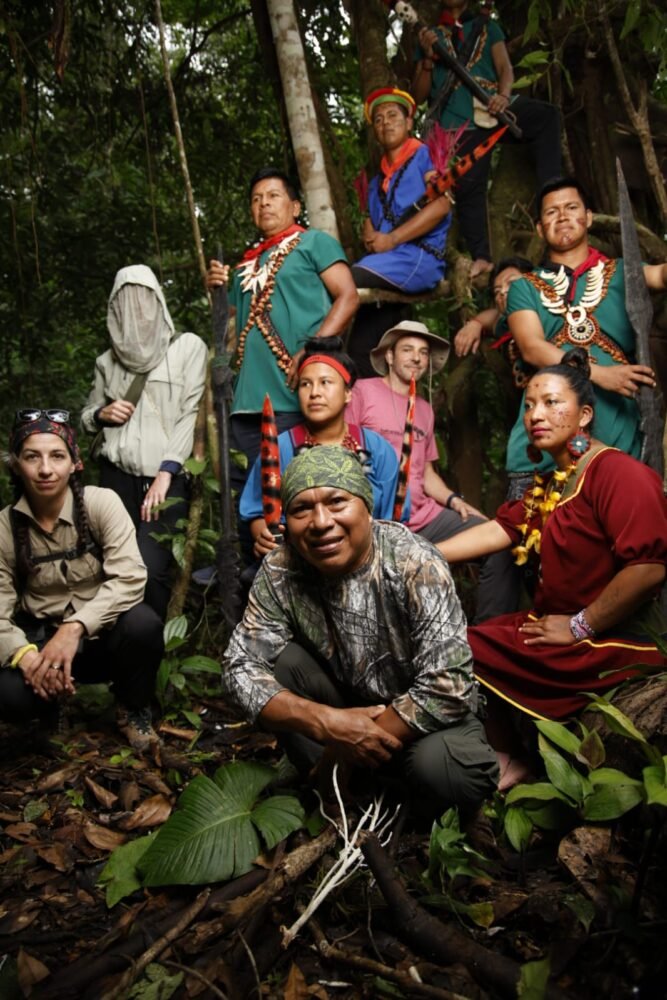
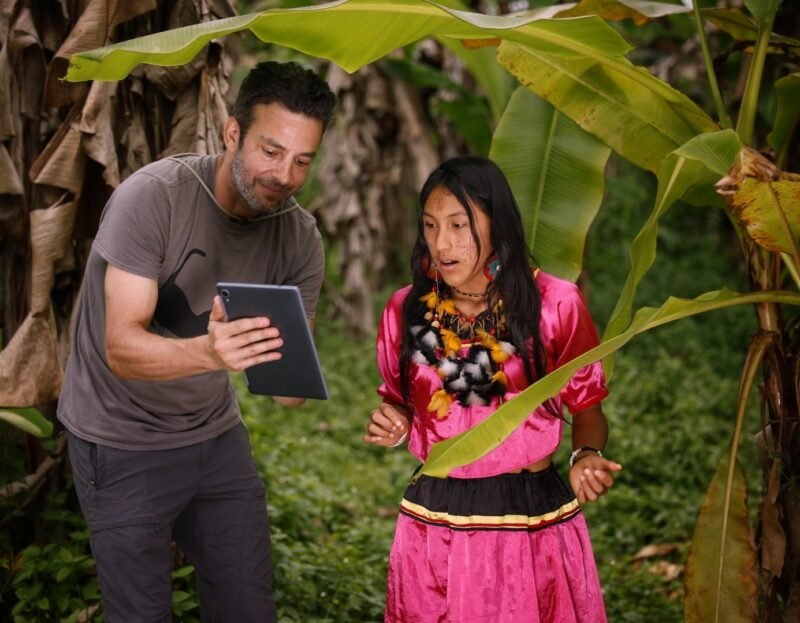
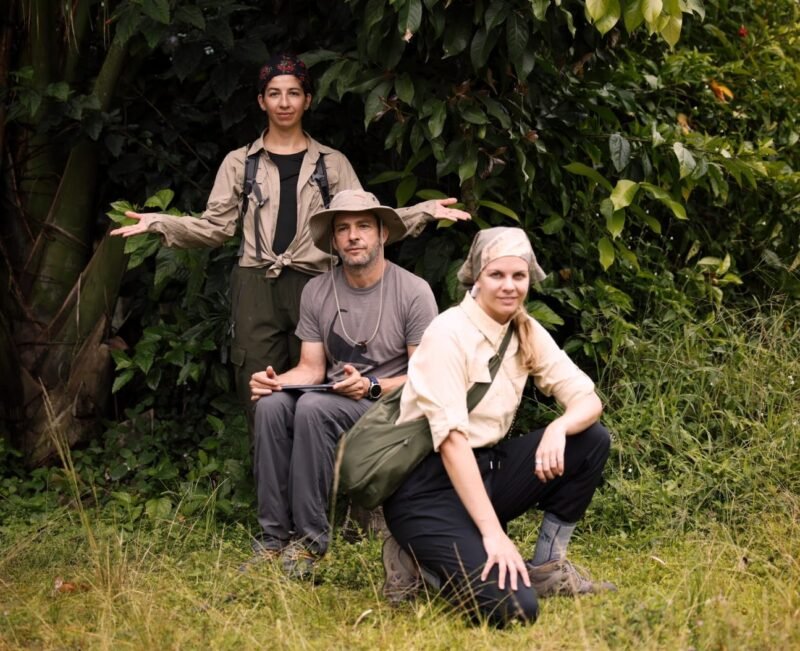
Links
Link to Publications and Exhibitions.
Link to About Aga
Link to Documentary Assignments
Link to Travel Portfolio
Sources
https://www.researchgate.net/publication/264784226_Surviving_the_Rubber_Boom_Cofan_and_Siona_Society_in_the_Colombia-Ecuador_Borderlands_1875-1955
https://amazonfrontlines.org/partners/kofan
https://notyouraverageamerican.com/huaorani-amazon-ecuador
https://pachamamitaecu.org/en/2012/09/13/history-of-the-origin-of-the-cofan-ai-people/
Delgado‐Ron, J. A. (2018). The role of the market of social norms in the yasuni itt initiative. Espirales Revista Multidisciplinaria de Investigación.
Nokrek National Park | park, Meghalaya, India | Britannica https://www.britannica.com/place/Nokrek-National-Park
Ecuador: All eyes on Yasuní – Keep the oil in the ground!
https://pachamamitaecu.org/en/2012/09/13/history-of-the-origin-of-the-cofan-ai-people/